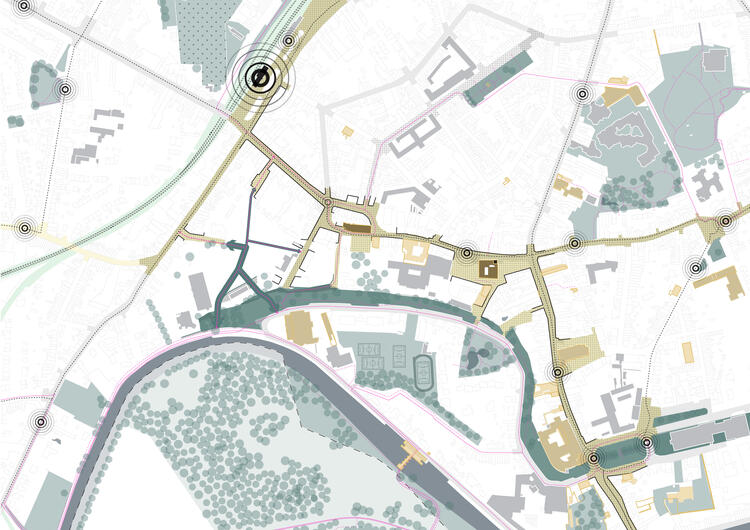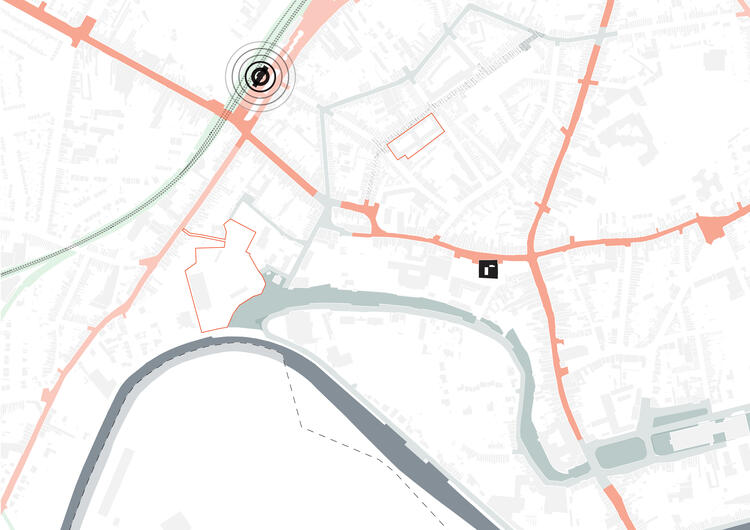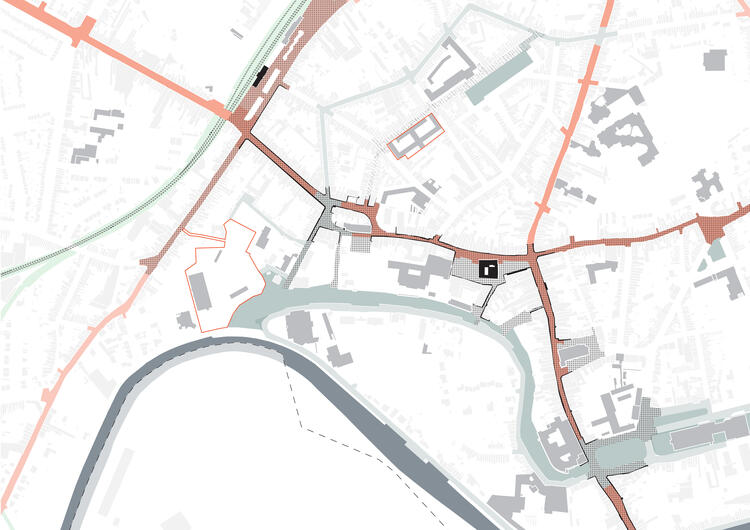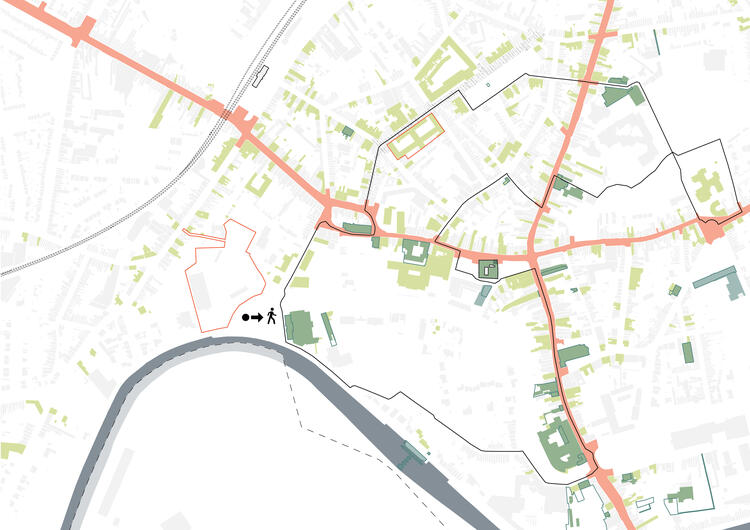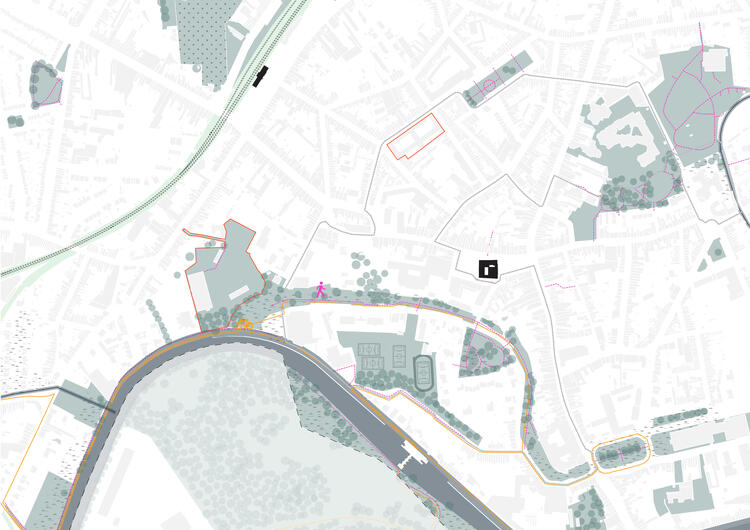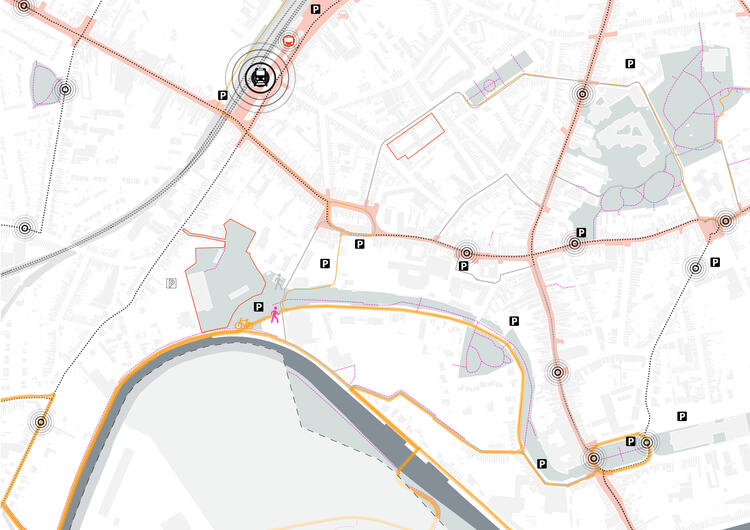Consolidating public property for the common good
An obsolete school building is the starting point for POLO Urbanism to undertake a wide-ranging investigation into various scenarios to relocate and consolidate pedagogical infrastructure in the Flemish city of Menen. We look for synergies and common ground in the ambitions of municipal and school authorities and employ these to realise an integrated hub of educational facilities in a lively green setting.
Not an uncommon occurrence in Belgium: a primary school is housed in an old building that is not adapted to current educational practices, expected comfort levels, standards of sustainability and energy efficiency. Instead of pursuing a costly renovation and extension of the outdated infrastructure, it has been decided to sell the old property to a private developer to be turned into housing. The heritage character of this building — which has become a hindrance to its functioning as a school — and its prime location represent a considerable market(ing) value for the envisioned private residences. It makes sense to monetise this value and direct the funds towards the construction of a brand new school building elsewhere.
A new education hub
The Flemish community, owner of the school, has another large plot of land in Menen, bordering a terrain containing municipal infrastructure — including an Academy for Performing Arts. Our Urbanism team analysed possible programmatic synergies across plot boundaries. This led to two scenarios with varying levels of entanglement between the two sites and their proprietors.
In the first scenario a new primary school is to be built at the heart of a new green living quarter on the Flemish community plot. In later phases the Academy of Performing Arts on the city plot can be complemented with a new building for the Academy of Visual Arts. Together with the Flemish Community schools this transforms the area in a new education hub for the city, while respecting clear boundaries and divisions between plots and allowing their separate functioning.
In the second scenario the school buildings on the different plots are more closely integrated. This allows for functional synergies and encourages creative cross-pollination. This option creates similar spatial qualities to the first option, but it differs in the park figure it draws and the added possibility of sharing clearly defined outdoor playgrounds between schools.
In both options the whole project site is transformed from an uneasy terrain vague of back facades and utilitarian buildings into an attractive assembly of built and unbuilt space; these vibrant and green surroundings should provoke a myriad of activities. In the longer term the area can inscribe itself in a series of cross connections between the main street of Menen and the old river arm with its adjacent linear park.
Cutting across plot boundaries and ownership interests
Private developers are invited to realise private housing projects on the government-owned plot in order to generate the funding needed for the new educational facilities. These residential buildings also ensure there is a permanent human presence and liveliness on the site. Their massing is brought into play to create a new consistently designed urban form.
The twin forces of finance and phasing assume a decisive role in this project. Designing a project that spans plots with various owners requires our best diplomatic skills in order to arraign consensual decision-making. This is a real jigsaw to be laid, for which we conducted a series of workshops, evaluating various scenarios with the different parties involved. In order to present precisely calculated strategies and preliminary designs we were assisted by the financial specialists of Orientes, checking costs and feasibility every step of the way.
The two scenarios we ended up with are similar in layout and spatial qualities, floor area and construction costs; yet they have vastly different repercussions on implementation procedures, daily operations and possibilities for sharing of space. In the end the decision to opt for a more or less integrated solution hinges on the desirability of functional synergies and the viability of a partnership project between the school and the city.
We compiled an elaborate feasibility and implementation manual which includes a thorough analysis, a cross border structure sketch and a base framework for juridical implementation. We also developed an architectural language through the use of reference images and volumetric studies, helping to make palatable an increased density through a varied materialisation and set back top floors. Hence our proposal seeks to infuse the precise calculations and elaborate phasing diagrams with the visuals that evoke the vibrancy of an exciting new addition to the city.


